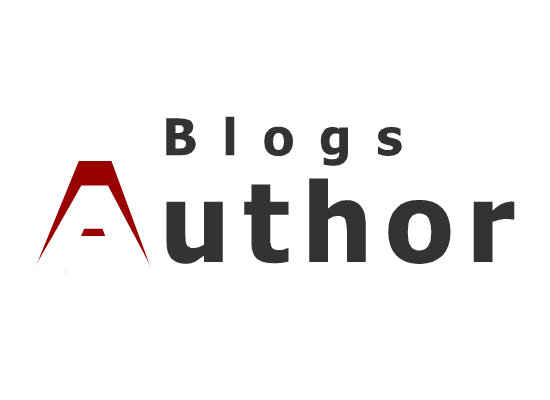The Reticular formation is a set of neurons that extend from the spinal cord to the thalamus. This structure allows the body to wake up after a long sleep and stay awake during the day. Today’s blog I’ve pointed out reticular formation facts (function, anatomy and diseases).
The complex network of neurons of reticular formation participates in the maintenance of excitability and consciousness. In addition, it interferes with the filtering of irrelevant stimuli so that we can focus on the relevant ones.
The reticular structure consists of more than 100 small neural networks that spread unevenly across the brainstem and medulla. Its nuclei affect cardiovascular control and motor control, as well as affect pain, sleep, and changes in habits.
For proper performance of the named functions, this structure maintains connections with the medulla oblongata, midbrain, ponce, and dizenfalon. On the other hand, it connects directly or indirectly with all levels of the nervous system.
Usually, drowsiness or coma occurs when there is any pathology or damage to the reticular structure. The major diseases associated with reticular formation are characterized by problems with the level of awareness or muscle control. For example, narcolepsy, Parkinson’s, schizophrenia, sleep disorders, or attention deficit hyperactivity disorder.
Reticular formation location
The exact location of the reticular structure is very difficult to imagine, as it contains a group of neurons that are found in different parts of the brain and spinal cord. Furthermore, it is more complicated to detect it by its numerous connections to multiple brain regions.
Reticular structure is found in different cases such as:
Spine
At this point the cells are not found in a group, but remain inside the spine, especially in the intermediate region of matter. This region contains a tract called the “reticulospinal” which is present in both the anterior cord and the lateral cord.
Most of the stimulation of these tracts is transmitted in a landing manner (from the medulla to other parts of the body), although some also ascend (from the organism to the nucleus of the brainstem).
Brainstem
In the brainstem it is the main place where the reticular structure is located. Studies have shown that your organization is not random. That is, according to their connection or function, they have properties that allow it to be divided into three groups of reticular nuclei, which have been explained later.
Hypothalamus
Uncertain regions seem to have a region of neurons in the lattice structure. It is located between the subthalamic nucleus and the thalamus and has numerous connections to the reticular nucleus of the brainstem. (Laterjet and Ruiz Liard, 2012).
Parts of the nucleus or reticular structure
The nuclei of the nucleus of reticular structure have three distinctions according to their function, connection and structure:
The median group of the nucleus
These are called rough nuclei, located in the middle column of the brain stem. It is the main place where serotonin is synthesized, which has a fundamental role in mood control.
The nucleus is the central group
According to their structure, they are divided into medial or gigantocellular nuclei (large cells) and posterolateral nuclei (consisting of a group of small cells called parvo cellular).
Lateral group of nuclei
These are integrated into the reticular structure because they have a very strange structure. These are the reticular, lateral and pyramidian nuclei at the level of the bulb, and the reticular nucleus of the pontiac tegmentum.
The lateral group of reticular structures is basically connected to the cerebellum.
Blog: Why cervical cancer occurs?
Reticular structure and neurotransmitters
The various cells that produce neurotransmitters are formed in the reticular structure. Also, they are involved in controlling the activity of the whole brain.
The most important areas of dopamine production are the ventral tegmental area and the substantia nigra, which are in the reticular structure. Although locus querulous is the main region from which norepinephrine neurons originate (which release and capture norepinephrine and adrenaline).
As with serotonin, the main nucleus that it secretes is the nucleus of the ruff. It is located in the midline of the brainstem in reticular formation.
Acetylcholine, on the other hand, is formed in the midbrain of reticular formation, especially in the pedunculopontine and laterdorsal tagmental nuclei.
These neurotransmitters are produced in these regions and then transferred to the central nervous system to control sensory perception, motor activity, and other behaviors.
Blog: What-is-cerebral-infarction?
Features
Reticular structure has a variety of basic functions, because from a phylogenetic point of view it is one of the oldest regions of the brain. Corrects levels of consciousness, sleep, pain, muscle control, etc.
Its effectiveness is explained in more detail below:
Caution control
Reticular formation greatly affects stimulation and consciousness. When we sleep, the level of consciousness is suppressed.
The reticular structure receives large amounts of fiber from the sensitive tracts and transmits these signals to the cerebral cortex. Thus, it allows us to be awake. The larger activity of reticular formation translates into more intense caution.
This function is operated by the activation lattice system (SAR), also known as the ascending excitation system. It plays an important role in attention and motivation. This system combines thinking, internal sensations and external influences.
Information is transmitted through neurotransmitters such as acetylcholine and norepinephrine.
Injuries to the reticular activation system can seriously compromise consciousness. Severe damage in this area can lead to coma or an endless plant state.
Blog: Comminuted fracture
Physical control
There are landing projections in specific motor neurons from reticular structures. It can facilitate or impede the movement of muscles. The major fibers responsible for motor control are found above all in the reticulospinal tract.
Furthermore, the reticular structure transfers visual, auditory, and vesicular signals to the cerebellum for integration of motor coordination.
It is essential for maintaining balance and posture. For example, it helps us to stand, walk, and stereotypical movements such as muscle tone control.
Blog: Tongue Disorders Facts
Control of facial movements
The reticular structure forms the circuit with the motor nucleus of the cranial nerve. Thus, they change the movement of the face and head.
This region contributes to orophysal motor responses by coordinating the activity of the trigeminal, facial, and hypoglossal nerves. As a result, it allows us to move our jaws, lips and tongue properly, to be able to chew and eat.
On the other hand, this structure also regulates the functioning of the facial muscles which express sensations. So, we can make the right movement to express emotions like laughter or crying.
As it is found bilaterally in the brain, it provides motor control to both sides of the mouth in a symmetrical manner. It also allows coordination of eye movements.
Blog: Common Dental Problems and treatment
Control of autonomous functions
Reticular structure uses the motor control of some autonomous functions. For example, the functions of the visceral organs.
Neurons of reticular structure contribute to motor activity related to the vagus nerve. Adequate functioning of the gastrointestinal system, respiratory system and cardiovascular functions is achieved thanks to this activity.
Therefore, reticular formation is associated with swallowing or vomiting. As the rhythm of sneezing, coughing or breathing. In the cardiovascular plane, the reticular structure can maintain an ideal blood pressure.
Blog: Porphyria disease vampire syndrome
Pain correction
Through reticular formation, pain signals are transmitted from the lower body to the cerebral cortex.
It is also the source of the landing analytical pathway. Nerve fibers in this region work on the spine to block pain signals from reaching the brain.
This is important because it allows us to relieve pain in certain situations, for example during very stressful or traumatic situations (GATE theory). Certain drugs have been shown to suppress pain when injected or destroyed in these pathways.
Blog: Halitosis disease Common Bad breath causes
Habits
It is a process by which the brain learns to ignore repetitive stimuli, which it finds irrelevant at that time. At the same time, it maintains the stimulus sensitivity of interest. The practice is achieved through the aforementioned activation reticular system (SAR).
Effects on the endocrine system
The reticular structure indirectly regulates the endocrine nervous system, as it acts in the hypothalamus to secrete hormones. It affects somatic modulation and visceral sensations. It is necessary to control the perception of pain.
Reticular formation Diseases facts
Since the reticular structure is located at the back of the brain, it seems to be more at risk for injury or damage. Usually, if reticular structure is affected, the patient goes into a coma. If the injury is bilateral and extensive, it can lead to death.
However, reticular formation can be affected by viruses, tumors, hernias, metabolic disorders, inflammation, toxins, etc.
The most common symptoms of reticular dysfunction are depression, nausea, shortness of breath, and heart rate.
Problems at the level of sleep, wakefulness and awareness
Reticular activation system (SAR) of reticular formation is important at the level of alertness or stimulation of the individual. It appears that there is a general decrease in the activity of this system with age.
Therefore, it seems that when there is an error in reticular structure, it is possible that there are problems with the level of consciousness as well as sleep and waking cycles.
For example, the reticular activator system sends signals to activate or block different regions of the cerebral cortex, depending on whether new stimuli or known stimuli appear. It is important to know which ingredients to participate in and which to ignore.
Thus, some models who try to explain the source of attention deficit hyperactivity disorder, confirm that this system may be inadequately developed in these patients.
Problems with mental illness
Garcia-Reill (1999 1997) confirms that the nervous and mental disorders such as Parkinson’s disease, schizophrenia, post-traumatic stress disorder, REM sleep disorder, and narcolepsy may be due to failure of the retinal activation system.
It was found in postmortem studies of patients with Pontinson disease, degeneration of the nucleus of the pontine peduncle.
This region consists of a set of nucleons that form a reticular structure. These are neurons that make extensive connections to structures involved in movement, such as the basal ganglia.
In Parkinson’s disease, there appears to be a significant reduction in the number of neurons forming local coarse. It produces a bacterium in the nucleus of the pontine peduncle, which also occurs in post-traumatic stress disorder and REM sleep disorders.
For this reason, there are authors who suggest stimulation of the deep brain of the pedunculopontine nucleus of reticular structure for the treatment of Parkinson’s disease.
Regarding schizophrenia, it has been observed that in some patients there is a significant increase in neurons in the pedunculopontine nucleus.
In the case of narcolepsy, sleep comes during the extra day, which may be associated with damage to the nucleus of the jelly structure.
Cataplasia
On the other hand, episodes of sudden loss of muscle tone during wakefulness are catalaplasi, associated with changes in the cells of the reticular structure. Especially in the cells of the magnetic nucleus, which regulates muscle relaxation during REM sleep.
Chronic fatigue syndrome
Furthermore, some studies of patients with chronic fatigue syndrome have found an abnormal activity in reticular formation.







2 Comments
Comments are closed.